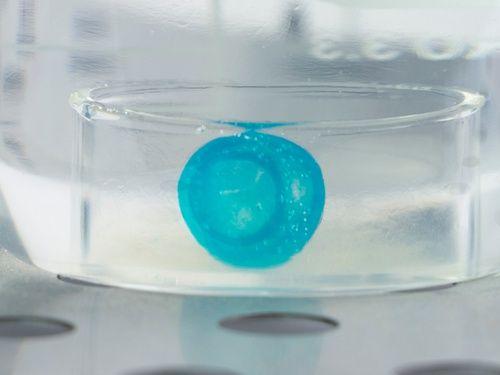FRESH Printing: The LulzBot Bio

The LulzBot Bio is a FRESH™ certified bioprinter ready to print bioinks, unmodified collagen, and other soft materials for pharmaceutical/cosmetic testing, tissue engineering, regenerative medicine, and so much more. You may be asking yourself what FRESH means and how it relates to bioprinting.
What is FRESH?
FRESH stands for Freeform Reversible Embedding of Suspended Hydrogels. This method of printing allows the Bio printer to suspend materials into a thermo-reversible viscous gel temporarily. Once a print is completed the LulzBot Bio’s heated bed can heat the gel to reverse the material’s viscous properties, turning it to a liquid and freeing the print. Having a viscous gel as a support material for bioprinting allows materials, such as unmodified collagen, alginate, or other soft materials, to be printed into delicate and difficult organic geometries that standard AM printers are incapable of producing.

An image of the LulzBot Bio printing a heart valve in LifeSupport
®
The best and most reliable form of thermo-reversible hydrogel for the FRESH process is LifeSupport® from FluidForm. Composed of sterile and dried gelatin microparticles. LifeSupport® is quicker and has optimal properties that have higher reproducibility than other methods of FRESH. LifeSupport® can be purchased from LulzBot here.
Early iterations of bioprinters forced materials to be modified and printed in the air, compromising their physiological relevance. The FRESH process allows materials to be printed unmodified and even benefit from the chemistry used when preparing the gel support; ionic, pH, enzymatic. This can help guide a tissue to develop properly.
FRESH is the only method where a bioprinter can print the most physiologically relevant cells and materials. For proper tissue function to happen there must first be proper tissue structure. Bioprinters need to be able to assemble a structure the same as any other biological organism. With the FRESH process this is achievable by having complete control over spatial alignment as well as printing soft deformable materials at a high resolution.
Before the LulzBot Bio, traditional forms of bioprinting failed at creating a high enough level of cell density to achieve functionality. Since FRESH eliminates the need to print materials in air, bioinks can focus on having more cell density. It is also very critical in bioprinting that a printer can create biopharma tissue models and also implantable tissue. Meaning you need a printer and a material that can scale to variable sizes. FRESH has those desirable capabilities, only being limited to the size of container the viscous gel is placed in. [1 The Pathway To Engineering Tissue and Organs; FluidForm]